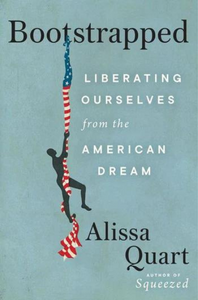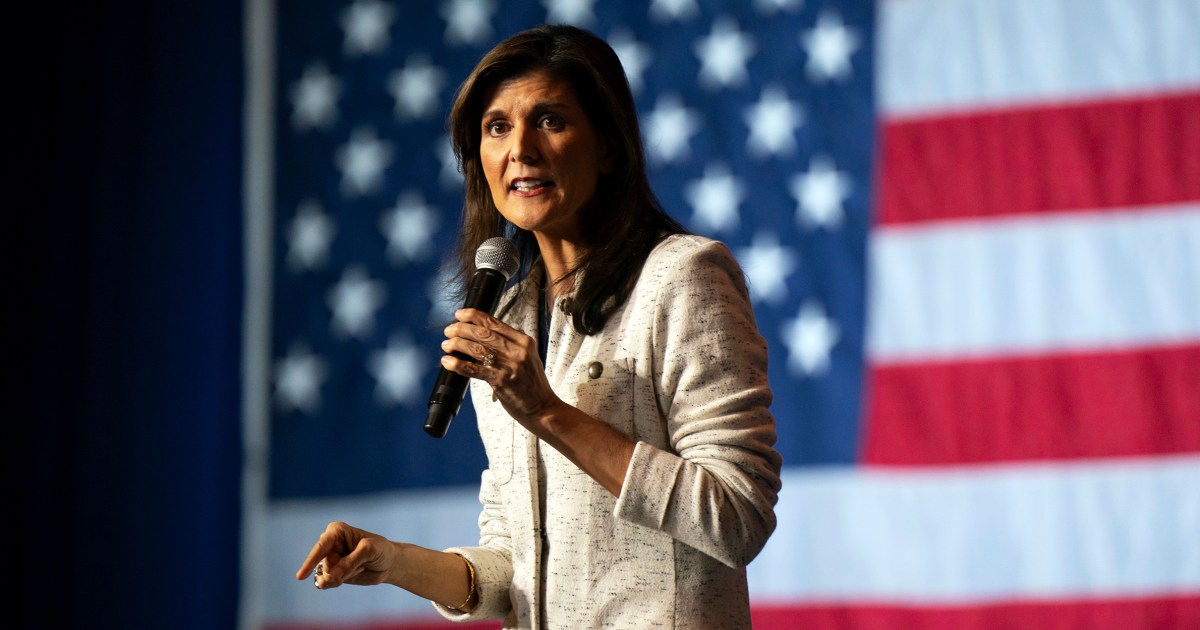A family traveled in a covered wagon, a mother, a father, and three young children. After miles and miles were logged, the fivesome decided to settle down in Missouri. Not long after, the father pleaded with his wife to let them leave that state and they proceeded on another leg of a trek, envisioning a future farther and farther west. They got to Wisconsin and then Kansas, part of the conflux of American pioneers.
“We can get a hundred and sixty acres out West, just by living on it, and the land’s as good as this is, or better,” the father told the mother. “If Uncle Sam’s willing to give us a farm in place of the one he drove us off of, in Indian Territory, I say let’s take it. The hunting’s good in the West, a man can get all the meat he wants.”
In 1874, the family arrived at its final destination, Minnesota’s Walnut Grove. “Pa” Charles lands a job. They build a log cabin. Pa spends his off hours farming on his own. At Christmas, Pa and Ma have to take additional jobs so they can afford gifts for their three girls. One of Charles’s jobs—as a powder monkey at a quarry—is unusually risky, but he does it for the added income.
The family’s hardships don’t stop there. They also encounter terrible weather, as when a hailstorm destroys the crops in the area. Sometimes the unpleasantness is interrupted by pleasures: a barn dance, the children gathering snow and covering it in maple syrup to create makeshift ices.
All of these scenes are drawn from Laura Ingalls Wilder’s Little House on the Prairie, just one of that autobiographical series of eight books, all but one published from 1932 to 1943 (the last one was published posthumously). To date, the series has sold over 60 million copies. If Emerson and Thoreau helped establish the poetic and intellectual version of self-sufficiency, Wilder espoused a mass cultural, child-friendly version of it. The series wound up in millions of living rooms and in the hands of young girls, forming their values. We might call the result young-adult bootstrapping.
As one such person who grew up on the edge of the Great Plains writes, they were a source of “poisonous cultural worship of bootstraps … that I absolutely treasured.”The books were undeniably appealing, trading in effective sentimentality. Wilder’s novel The Long Winter, for instance, about how her family survived a savage winter in the Dakota Territory, making sticks from hay to serve as coal and grinding their own wheat in a coffee mill for bread, is catnip for an intrepid twenty-first-century child or tween.
Wilder’s Little House is girlish tessera in the mosaic that is the pioneer-Western-self-creation fantasy. It is a do-it-yourself-in-the-territories narrative so enticing that Little House stayed with many of its young readers into adulthood. As one such person who grew up on the edge of the Great Plains writes, they were a source of “poisonous cultural worship of bootstraps … that I absolutely treasured.”
The books could be seen as underlying both an American pressure to make it on one’s gumption alone and the accordant shame when a person could not do so. What Little House on the Prairie indicates and suggests more broadly is that even we denizens of the twentieth and twenty-first centuries—who are not able-bodied white men willing to take land from indigenous populations—should follow Wilder’s mythologized parents’ example and make our own reality with our own hands or be deemed weak and failed.
Wilder’s own biography hews closely to the lives depicted in her series. She was born in 1867 in a log cabin in rural Wisconsin. When she was 12, her family became homesteaders, moving frequently. She and her siblings were partially self-taught as a result. The family always needed money, which was why at only 15 she started working full-time as a teacher. As in her books, she married an older family friend, Almanzo Wilder, at 18. The couple had two children—one died. The Wilders lived a peripatetic life, traveling from place to place, stopping finally in the Ozarks, where they ran a farm and did all the work.
Laura’s literary legacy, though, was sealed by her daughter, Rose Wilder Lane. Lane pushed her mother to publish her autobiography. A reporter and a rabid libertarian to boot, Lane worked with Wilder on the manuscripts and mentioned in her diaries that she heavily edited them. For all of Lane’s aggressive ambition, there was no great success at first, because Wilder’s initial autobiography was rejected. In 1932, the first book of her series was published and became an international megahit. Laura Ingalls Wilder would continue to use her fame—her books, her lectures—as a bullhorn for the bootstrapping paragon, until she died in 1957 at 90 years old.
In her books as well as her public life, Wilder loudly trumpeted the self-reliant ideal. She found a corollary in the political culture defined by President Herbert Hoover and others. In 1928, Hoover used the phrase “rugged individualism.” In a campaign speech that year, he deployed it and then offered himself as its poster boy, rather than espousing the “European philosophy” of “state socialism” that he implied belonged to his rivals. Hoover declaimed: “The American pioneer is the epic expression of that individualism. … That spirit never need die for lack of something for it to achieve.” (The Herbert Hoover Presidential Library and Museum houses Wilder’s daughter Rose Wilder Lane’s papers and testaments to what its website calls her “extraordinary life … formulating and promoting libertarian ideas,” which included her positive biography of Hoover.)
Hoover’s rabidly bootstrapping stance was refuted by Franklin Delano Roosevelt’s positive attitude toward social programs, which was part of why Wilder stood in opposition to that president. Libertarians avant la lettre, Wilder and Lane hated FDR and saw the New Deal as weakening the citizenry. “We have a dictator,” Lane writes of Roosevelt in her journal, also saying she’d like to “kill that traitor.”
She must have been hopping mad when Roosevelt countered his predecessor Hoover’s rabidly individualistic rhetoric in 1935 with oratory encouraging Americans to “unlearn” that “superstition” that “the American spirit of individualism—all alone and unaided by the cooperative efforts of government—could withstand and repel every form of economic disarrangement and crisis.”
The Depression ultimately catalyzed radical social solutions and changes, among them the cooperative-minded New Deal. For writers and artists who, unlike Wilder, were desperately poor, FDR created the Federal Writers’ Project, which ran for eight years starting in the middle of the Depression and was part of the Works Progress Administration. It supported 6,600 writers, editors, and researchers who created not only journalism but also oral histories, including first-person recollections of formerly enslaved people and stories of Depression-era Hoovervilles, or shantytowns, created by the previous president’s draconian housing and economic policies.
Wilder, meanwhile, saw her books as an argument against these and other governmental assistance programs that arose at that time. She publicly commented that government was too intrusive, that taxes were part of “the swift and violent death” of democracy.
Laura Ingalls and her sisters and her mother can—and must— make their own dresses and start their own fires to survive, at the same time never acknowledging the ways in which white families had access to this “independence” only because they took indigenous land for free.When my daughter was seven, I reentered Wilder’s world. I would stay up watching the TV show based on the books, which I read to her out loud. Our protagonist, Laura, was indeed spunky (as they used to say of girls), and her family’s adventures—surviving when it was too cold and stormy to see even their neighbors—engrossed us. My daughter loved Little House on the Prairie so much that she decided to dress up for Halloween as Wilder, her idol. She donned a crisp poplin dress, plaited her hair, and gently wheedled me into wearing a white bonnet and purchasing a corncob pipe and suspenders for my husband, an unlikely Pa, especially in his 1940s fedora.
Rugged individualism-as-costume party: my daughter liked the idea of independence that she found in the books and the TV series; it appealed to a child with a sharp will who nevertheless still very much needed her parents. She had been a lifelong apartment dweller who believed city parks were nature, but she had fallen in love with the Wilder-verse in all its guises.
As we watched the show together, I couldn’t help but recognize that though they were seemingly harmless, these novels and that hit show were a crucial example of the way the bootstrapping ideology wormed its way into the minds of children. The books and show gave her an image of a family thrown back on their own resources. She—and her generation’s children—might long for this intensely. Part of the appeal was the insularity of the books, and their cozy, hygge, vibe—like a house themselves, they were built around a single family and appeared on the surface like a log cabin, airtight and humble and reassuringly old-fashioned.
But I knew there was a dark undercurrent to these books and that they rested on some false premises. When the Ingalls family, for example, moved to Kansas (before Minnesota) to homestead, it wasn’t just the family’s pluck that served them—that they could get land there at all was due to white homesteading. By 1877, most of the Kansa or Kaw Indians had been pushed from their land to the Indian Territory. As the Oklahoma Historical Society puts it, “The end of the Civil War allowed another surge of Anglo-American settlement into the West, and again tribal nations were pressured onto reservations in the Indian Territory,” laying the groundwork for the Ingalls family and those like them.
Laura Ingalls and her sisters and her mother can—and must—make their own dresses and start their own fires to survive, at the same time never acknowledging the ways in which white families had access to this “independence” only because they took indigenous land for free. To seal in the denial of the fact that the land they were living on most likely had been tribal, the most famous of the Little House on the Prairie series of books contains variations on the slur “the only good Indian is a dead Indian” not once but three times.
In addition, for the women themselves, Plains and pioneer existence often felt less, well, free than Wilder liked to imagine. Feminist author Carol Tavris puts it like this in her book The Mismeasure of Woman: “Was the American frontier ‘conquered’ by single scouts, brave men ‘taming’ the wilderness and founding a culture based on self-reliance? The mythic vision excludes the women who struggled to establish homes, survive childbirth, care for families, and contribute with men to the community.”
Curious about what life on the Plains was really like for women, when my daughter went to sleep I read a version of pioneer life that showed me a far more authentic picture, the 1929 autobiographical novel Daughter of Earth. Its author Agnes Smedley’s family lived in a log cabin on the Plains and in a mining camp in Colorado. The family barely survived hunger and a cyclone.
In Daughter of Earth, Smedley, born in Missouri in 1892—25 years after Laura Ingalls Wilder—wrote of the protagonist of her novel that was inspired by Smedley’s own life and how her fictional stand-in, Marie Rogers, and Marie’s mother and sister washed clothes to make ends meet. Their house was “one mass of steaming sheets, underwear and shirts, and to get from one room to the other we had to crawl on the floor.”
__________________________________

From Bootstrapped. Reprinted by arrangement with Ecco. Copyright © 2023 by Alissa Quart.
The Link Lonk
March 20, 2023 at 03:57PM
https://news.google.com/rss/articles/CBMiaWh0dHBzOi8vbGl0aHViLmNvbS9saXR0bGUtaG91c2Utb2YtcHJvcGFnYW5kYS1ob21lc3RlYWRpbmctbXl0aHMtYW5kLXRoZS1zZW50aW1lbnRhbGl0eS1vZi1zZWxmLXJlbGlhbmNlL9IBAA?oc=5
Little House of Propaganda: Homesteading Myths and the Sentimentality of Self-Reliance - Literary Hub
https://news.google.com/search?q=little&hl=en-US&gl=US&ceid=US:en

No comments:
Post a Comment